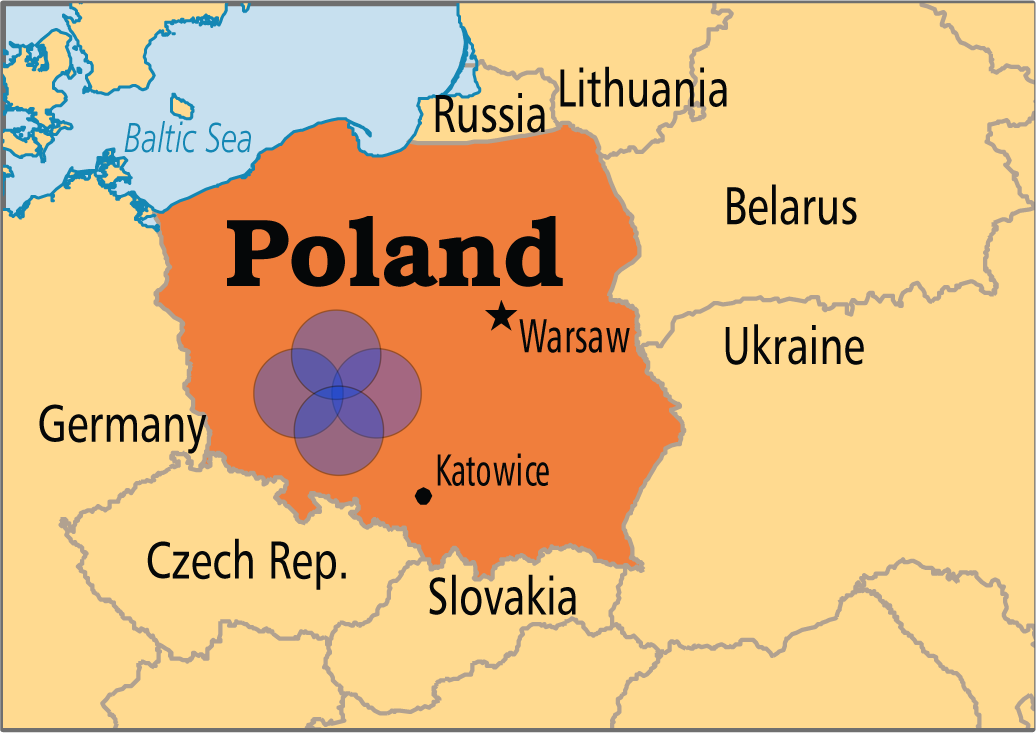APRIL 7, 2022 – I can best characterize my impression of Poland in September 1981 via a giant Venn diagram depicting Polish: 1. Social unity; 2. Catholicism; 3. Sophistication in the arts and understanding of history and politics; and 4. Hatred of the Russians. Within the substantial overlap of these “circles” I found the essence of Poland as it sought to break free of Soviet rule.
A brief survey of Polish history—and geography—is essential to understanding the “Venn diagram.”
In crisscrossing the land by trains, I was struck by how flat*—and therefore, vulnerable to invasion—the country has been throughout its tumultuous history. Whether by armies on foot, horseback, aboard wagons or tanks, Poland has been invaded time and again by bigger powers on all sides—including Sweden to the north. Perhaps the most conspicuous geo-historical feature of Poland over the centuries is the fluidity of its borders.
The “border problem” is a question raised early in the two-volume, definitive work, God’s Playground: A History of Poland, by renowned British scholar, Norman Davies. “What is ‘Poland’?” he asks. Because Poland as a nation-state has expanded, contracted—even disappeared before it reappeared, then shifted radically in shape and location—its historical definition is elusive.
That said, three features of Polish history merit review. First is the extreme treatment—good, then horrific—of Jews. For centuries there was long-standing tolerance of Jews in Poland, particularly under the enlightened reign (1333-1370) of the “Polish Justinian,” King Casimir the Great, who saw great potential in Jewish skill in commerce versus the moribund ways of the nation’s szlachta (landed aristocracy). Large incoming Jewish migrations ensued, as people fled perennial anti-Semitism in other parts of Europe.
This tolerance diminished after the Reformation and yielded to anti-Semitism in the century after the Partitions (explained below). By the 1930s, the Polish government was actively encouraging Jews to emigrate to Palestine. When Germany invaded Poland on September 1, 1939, Jewish citizens—over 3 million—still exceeded 10% of the total Polish population. They’d constitute 90% of Jewish Holocaust victims and 50% of Polish deaths. Today the Jewish population is only 15,000. I’d read about much of this horror before my travels in Poland. It was driven home during my day-long, emotionally devastating tour of Auschwitz.
The second important historical feature is the late 18th century Partitions of Poland among Prussia, Russia, and Austria. As the result of this “three-way feast,” Poland disappeared from the map until after WW I.
The third critical period of Polish history occurred during WW II, when Germany and the USSR partitioned Poland yet again. After victory over Hitler, Stalin maneuvered to push Poland westward on the map, then forced it into the post-war, Soviet orbit. For the first time in its 1,000-year history, Poland the nation-state was nearly 100% Polish and 100% Catholic. This demographic reality would pose grave repercussions for the USSR as it struggled to keep its empire from unraveling.
The foregoing historical points were deeply ingrained in the Polish psyche of 1981. They occupied the center of my “Venn Diagram” impressions of Poland.
______________________
*The level terrain was heavily cultivated, but from the train I noticed that most of the crops were seeded by horse-drawn implements, as revealed by irregular rows—and ubiquitous work horses, ancient wagons, and other anachronistic farm machinery. A notable exception to “flat” was in the south in the vicinity of Zakopane, a summer-hiking/winter-skiing resort area. There I hiked up the north side of the High Tatras and down into Czechoslovakia where I’d hiked two months before. I derived a bit of a thrill in making an illegal border crossing. The scenery was phenomenal.
(Remember to subscribe to this blog and receive notifications of new posts by email.)
© 2022 by Eric Nilsson
